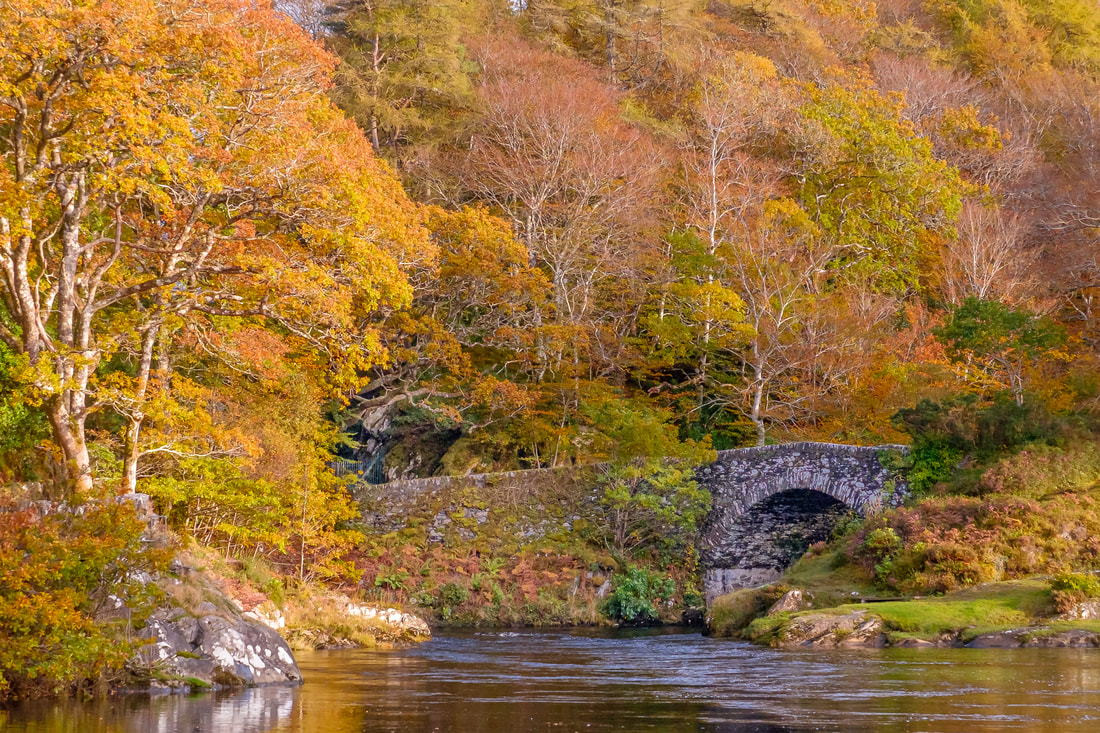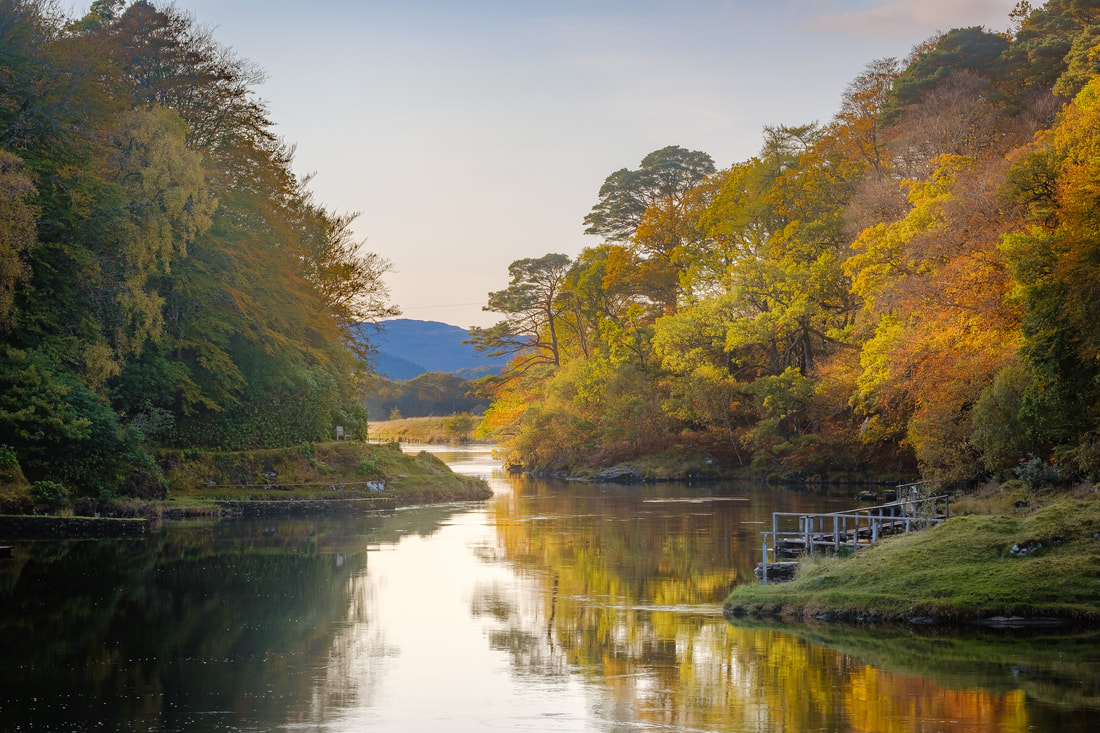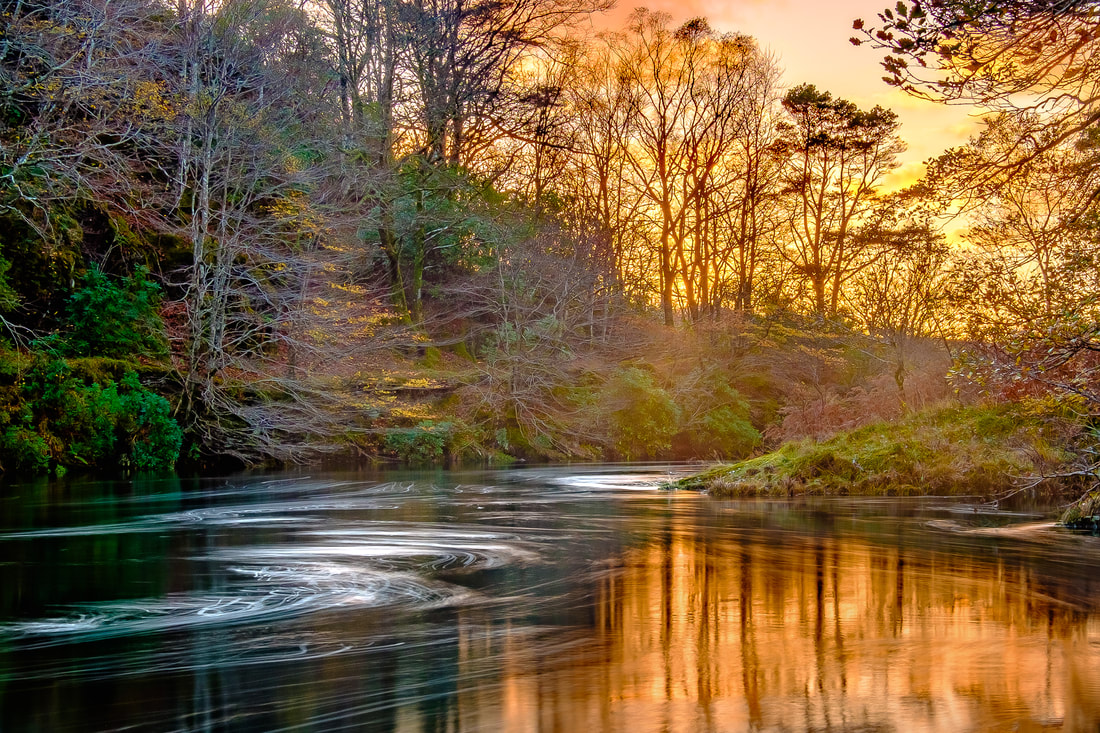|
As we move away from the Autumn Equinox and towards the Winter Solstice it seems to me that, along with the days getting shorter and colder, the evening skies are getting brighter and bolder. We often get brooding skies, with the oranges, pinks and reds from the setting sun breaking up the greys, blues and purples of clearing storm clouds to produce dramatic scenes such as one I witnessed at Castle Tioram on a late-November afternoon and shown the image below. This makes me beg the question: Are late autumn and winter sunsets better than those we get at other times of the year? Well, it turns out that scientific studies have confirmed this to be the case and they have discovered the reasons why Scientific researchers have found that the peak sunset season is from November through to February and that this is down to a combination three things. These are the type and quantity of the cloud cover, cooler air temperatures and how the Earth is tilted towards the sun at this time of the year. Contrary to what you might think, we need clouds for a good sunset and they have to be the right kind of clouds. If they are too low down on the horizon, they will block out the Sun’s rays and prevent a sunset. Instead, we need mid to high level clouds that will refract the sunlight and give us those beautiful sunset colours. This happens more in autumn and winter because the weather patterns we get then tend to bring mid and high-level altocumulus, altostratus and cirrus clouds. The cooler temperatures mean that the air is less humid and that there is less water vapour to capture dust particles that are in the air and create the haze which is often a feature of the summer months. When present, this haze scatters sunlight and reduces its intensity. So, in autumn and winter, the lower humidity means that the air is clearer and we see the colours produced by the setting sun in all their intensity. Finally, as we approach the winter solstice, the North Pole gets tilted further away from the sun, lengthening the time taken for the sun to set. This, in turn, means that the sunset colours last longer than at the equinoxes, for example, when the sun sinks very quickly towards the horizon at a 90-degree angle. The result is that we have more time to enjoy the sunset colours and the sunset colours have more time to make an impact on us. Despite all of these variables, predicting sunsets doesn’t have to be hard. All you need to do is keep an eye out for the following key indicators:
Mid to high-level clouds (2km and above) Cloud coverage - 30 to 70 percent Humidity - low but not too low Clean air Prior rainfall - no less than 2 to 6 hours before Wind speed - low or non-existent There are many online forecasts for these weather conditions and the one I refer to most is windy.com. So why don’t you have a go at predicting a sunset and head west at what you think might be a good time. You never know, you may be well rewarded for your efforts!
2 Comments
We are now in well in to October, the second month of meteorological autumn. It is when the number of visitors to the Peninsula reduces, the days become shorter, the nights become cooler, and the sun gets lower in the sky. This brings a quietness to the area and a quality of light that cannot be found at any other time of the year which, when combined with the autumn colours, makes what is a photographer’s paradise even more perfect than it already was. By the middle of the month most of the numerous wooded areas around the Peninsula are normally at or near their “autumn peak”, having swapped canopies of green for tapestries of vibrant reds, golds and ambers. The image above was taken around this time in 2019, which was a particularly good year for the autumn colours, and it shows the trees around the Old Shiel Bridge at Blain in their full autumn splendour. The Old Bridge was built by Thomas Telford in 1804. It spans a narrow chasm through which the waters of the River Shiel pass and seem to come to the boil before they expand in the House Pool, slow down and then run both still and deep. This single span bridge provides an interesting subject that can be photographed from many different angles. This, combined with how the smooth waters of the House Pool and the river downstream of it reflect the autumn colours, make it the perfect place to capture the splendour of the trees at this time of the year. I’ve visited the bridge a few times over the last week or so to find that the arrival of the autumn colours is not quite as advanced as it normally is. Indeed, I can’t help feeling it is a week or two behind and although there are now hints of golds in the landscape, I find my myself wondering if their late arrival means that there will be a poorer show this year.
So, what makes for a good show of autumn colours? Well, the answer lies in the fact that leaf colour comes from pigments, which are natural substances produced by the leaf cells to help them obtain food. There are three pigments: chlorophyll (green), carotenes (yellow) and anthocyanins (reds and pinks). It is the mix of them, as influenced by the weather, that determines depth of colour we get each year:
In addition to this, a warm dry 'Indian summer' is needed so that the leaves work for longer and therefore stay full of these pigments until the reducing hours of daylight and lower night temperatures trigger the colour change. So, if we’re to have another great show of autumn colours this year, let’s hope for some settled weather over the next couple of weeks, followed by some cold nights and dry, bright sunny days. |
AuthorHi, Archives
July 2024
Categories
All
|
Steven Marshall Photography, Rockpool House, Resipole, Strontian, Acharacle, PH36 4HX
Telephone: 01967 431 335 | Mobile: 07585 910 058 | Email: [email protected]
Telephone: 01967 431 335 | Mobile: 07585 910 058 | Email: [email protected]
All Images & Text Copyright © 2024 - Steven Marshall - All Rights Reserved








